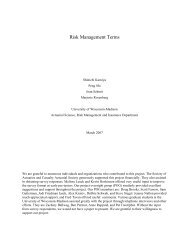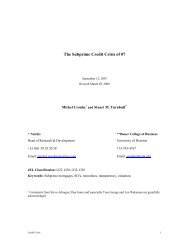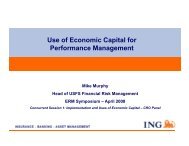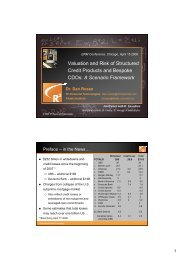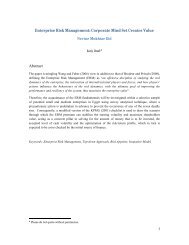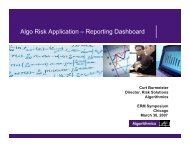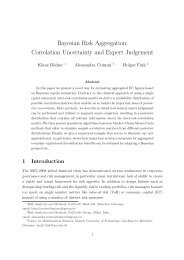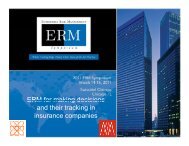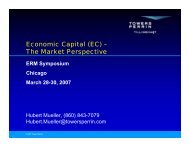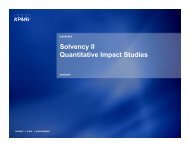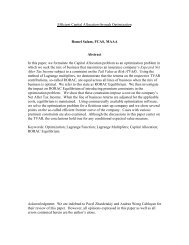An Empirical Map of Enterprise Risk Space for ... - ERM Symposium
An Empirical Map of Enterprise Risk Space for ... - ERM Symposium
An Empirical Map of Enterprise Risk Space for ... - ERM Symposium
Create successful ePaper yourself
Turn your PDF publications into a flip-book with our unique Google optimized e-Paper software.
Summary and Significance <strong>of</strong> this Research<br />
In this work, we expand Baran<strong>of</strong>f and Sager (2006) in two respects. Most importantly, we study<br />
the interrelationship between the structure <strong>of</strong> the risk universe <strong>of</strong> life insurers and the structure <strong>of</strong><br />
their <strong>ERM</strong> tool universe, both as reflected in the objective data <strong>of</strong> their financial statements.<br />
Secondarily, we expand the risk and tool spaces by including additional risks and tools. We use<br />
the same methodology to map risks and tools: cluster analysis to group similar risks together and<br />
similar <strong>ERM</strong> tools together, followed by factor analysis <strong>of</strong> each cluster to characterize the<br />
themes <strong>of</strong> the clusters. Then we study how the risks and <strong>ERM</strong> tools correspond to each other.<br />
Both sides, risks and <strong>ERM</strong> tools, are multivariate. So we employ canonical correlation to study<br />
the interrelationship between the universe <strong>of</strong> risks and the universe <strong>of</strong> <strong>ERM</strong> tools. Other<br />
methodologies require directionality in the relationship (regression) or implicitly define both<br />
30



